► Second-gen crossover revealed
► Features hybrid and plug-in hybrid power
► Sharper looks, more practical design
The 2024 Toyota C-HR – the second generation of the brand’s small crossover, has ben revealed, offering greater EV ability, revised styling and improved handling.
This new version takes a similar approach to the first generation, with a swooping roof line and a ‘coupe-like’ design. It shares its front-end look with the company’s recently launched bZ4X electric SUV, but adds a few bespoke features such as the flush rear door handles and eye-catching two-tone paint.
The engine range is less radical than the looks, with some familiar hybrid and plug-in hybrid powertrains to choose from. They also get some enhancements, though, with improved EV abilities.
The new 2024 Toyota C-HR: the styling upgrades
The C-HR has a big job on its hands, as this has to fill at least some of the gap left by the once-ubiquitous Toyota Prius, which won’t be coming to these shores in its latest version. It shares plenty with the hatchback so beloved by urban minicab drivers, including its engines and its platform.
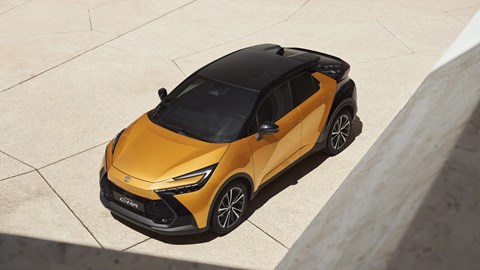
It’s a much more daring design, though, with plenty of cues carried over from the concept cars for the second generation of C-HR. The diamond shapes along the side, short front an rear overhangs and large wheels (up to 20 inches in diameter) all stand out, but not as much as the two-tone paint. This extends the black paint on the roof to it stretches down into the rear three quarters of the car.
The design tweaks also result in an improvement in aerodynamic efficiency – the new front bumper and rear spoiler combine to improve airflow over the vehicle.
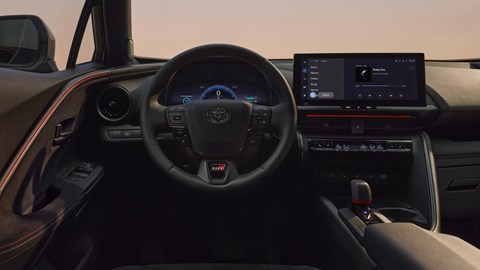
It’s slightly less dramatic on the inside, where things are more in taking with other recent Toyotas. There are improvements to the materials, though, and a design that is more centred around the driver. All control elements are in the driver’s ‘zone’ for example. The 12.3-inch touchscreen takes centre stage, while there is a range of new kit to play with, including up to 64 interior lighting settings. You can even set these to vary throughout the day as the hours pass – bright ones in the morning and more relaxing ones in the evening for example.
The lighting display will also interact with the safety systems, by switching it to red if you are in danger of opening a door into the path of a car or cyclist approaching from the rear for instance.
The C-HR also features more sustainable materials than before, with a seat fabric made from recycled PET bottles, a leather-free cover for the steering wheel and a bumper that is pre-coloured in the mould to reduce painting.
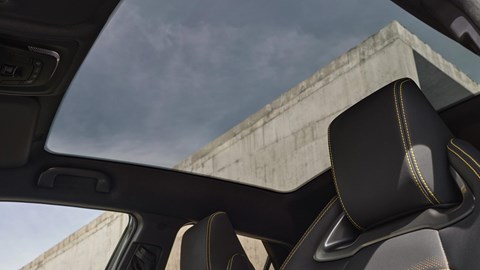
The fixed panoramic roof has a coating that reduces the amount of infra-red light that can get in and keeps heat in. This prevents the cabin getting hot in summer and cold in winter. Not only does this reduce the strain on the air conditioning and heating systems, it removes the need for a sun screen, thus reducing weight by 5kg. It also boosts headroom by 3cm.
There is also a Digital Smart Key, which will be added to the range in 2024. This will allow drivers to access and start the car using their phone
What engines will the 2024 Toyota C-HR come with?
The engines are familiar, if an upgrade over the outgoing C-HR, in that they are hybrids in one form or another. There are three engines in total, with two conventional hybrids and one plug-in hybrid.
The conventional hybrids are the same as those in the new Corolla, with a 1.8-litre petrol and a 2.0-litre petrol paired with a battery and motor combo. They benefit from the recent upgrades that the rest of the range come with, so there should be an improvement over the outgoing car’s efficiency ratings. Final fuel economy figures are not yet available, but they should offer something better than the 56.5mpg maximum of the outgoing version.
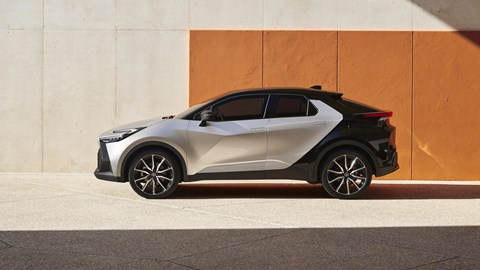
The plug-in hybrid engine is a new offering for the C-HR, and it also features a 2.0-litre petrol engine, although a larger battery means more electric-only miles. Again, final figures are not yet available.
The PHEV comes with a few new features, such as ‘Regeneration Boost’ which allows you to set the engine braking to such an extent that you should be able to drive in a ‘one-pedal’ style – it should slow the car down to the extent that you won’t need to touch the brakes.
The new C-HR PHEV also comes with geofencing technology that will help you maximise the electric-only abilities of the car. It will be able to automatically switch to EV mode when you entre a low-emission zone, and will also be able to optimise its battery use throughout a trip. This is yet to be confirmed as coming to the UK, though. As yet, there is no fully electric C-HR, though.
As before, the new model will be built and developed in Europe with European tastes in mind.
Improved safety and driver assistance
Every version of the new C-HR will come with the latest Toyota safety kit, which has some new developments included. One of these new systems will reduce the throttle input when the car detects a risk of a collision, while a Proactive Driving Assist (PDA) will aid with smooth braking when come off the throttle at low speeds. Steering Assist will detect a corner ahead and adjust the input needed to get around a bend smoothly.
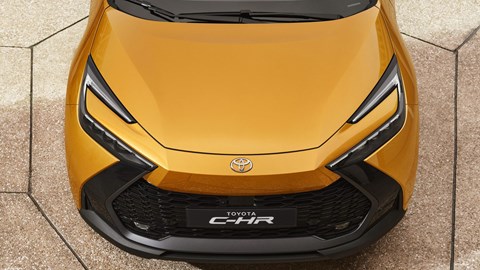
It’ll also be able to let you take your hands off the wheel, where laws allow, as it’ll be able to follow the car ahead in stop-start traffic.
The steering, suspension and brakes have all been tweaked, too, with the goal of improving the comfort and drivability.
Premier Edition at launch
The Toyota C-HR is set to launch with a a Premier Edition, which will come with all the new highlights included. Precise timings are not yet available for the C-HR’s launch, nor are pricing and full spec details – we’ll bring you more information when we have it.